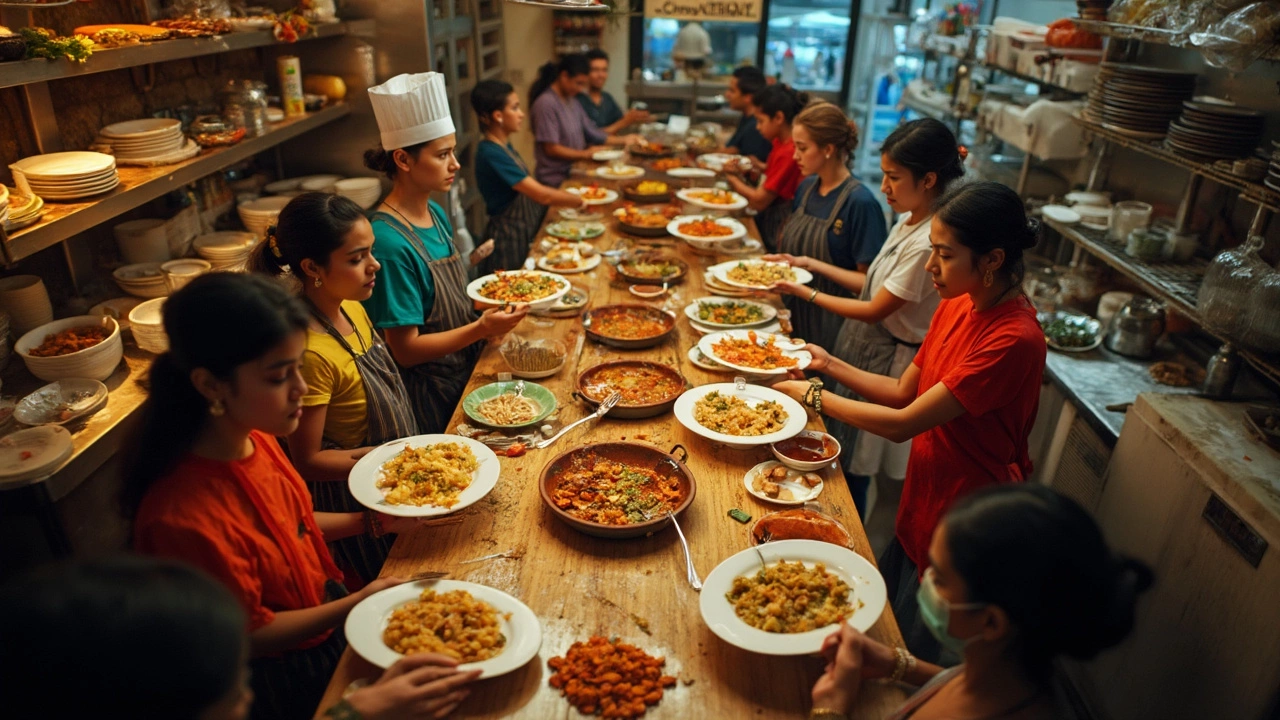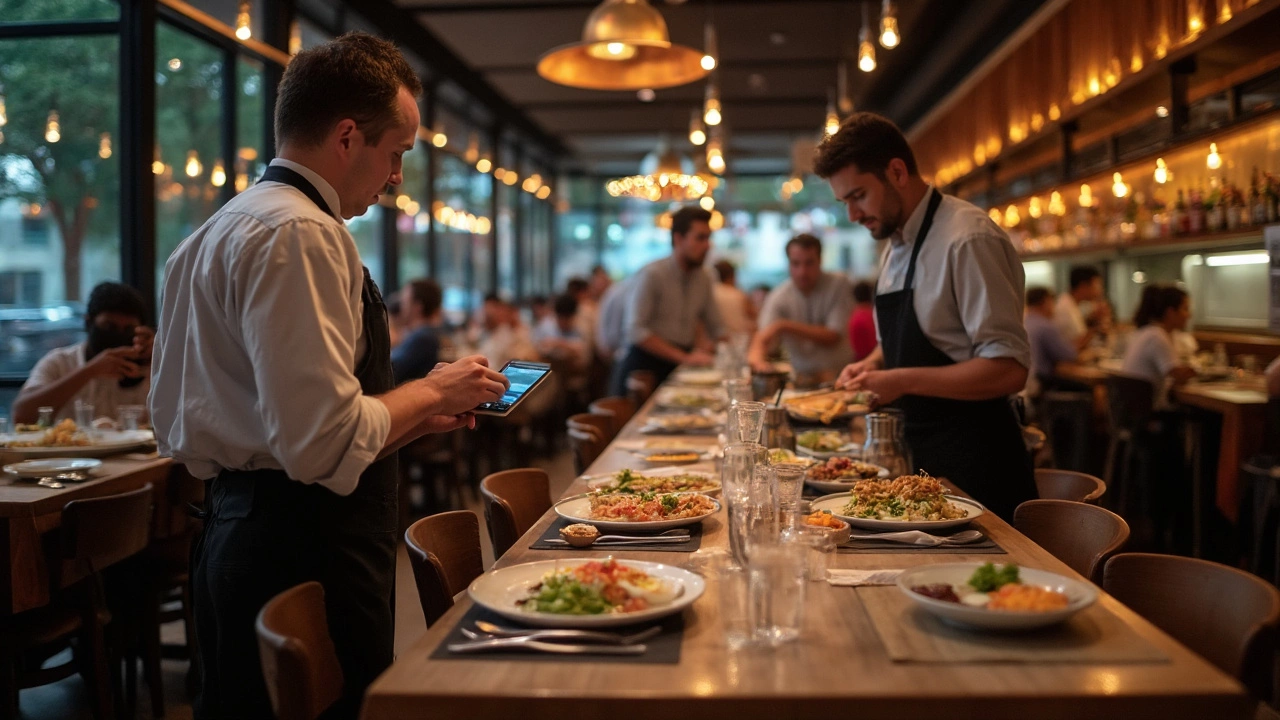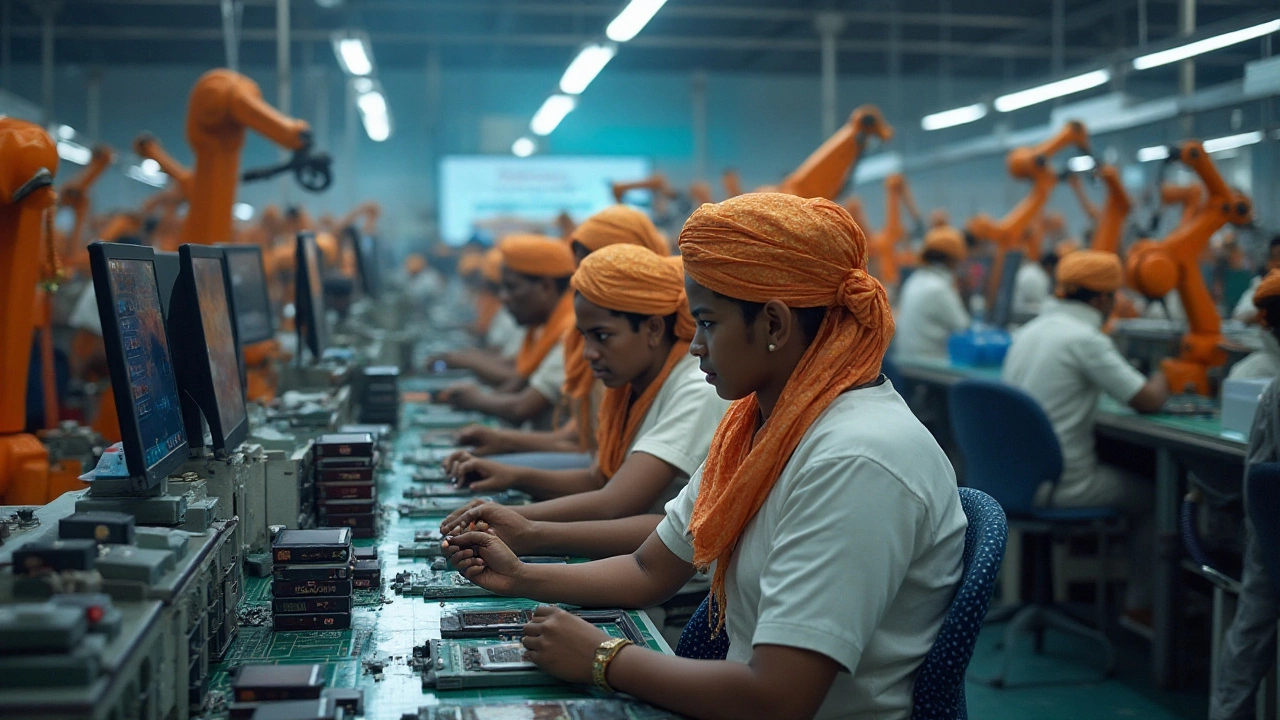CPU in a Restaurant: What It Is and Why It Matters for Food Processing

Think the only CPU that matters is inside your computer? In restaurants, CPU means something totally different—Central Production Unit. It's the heart of a food business, especially for places that run multiple locations or have high volume, like big delivery chains or hotels. The CPU isn’t a flashy gadget or a techy screen, but a kitchen where large amounts of food get prepped, cooked, and packaged for other branches or outlets.
If you’ve ever wondered how your order arrives so quickly, or why food tastes consistent whether you’re in Bangalore, Mumbai, or Delhi, the CPU is probably the secret. Food gets made in bulk, portioned, sometimes chilled or frozen, and then sent out to different restaurant locations to be finished and served. This setup keeps things moving fast, cuts waste, and makes life a whole lot easier for kitchen staff at each outlet. Simple idea, huge impact, right?
- The Real Meaning of CPU in Restaurants
- How a Restaurant CPU Works Day-to-Day
- Advantages of Using a CPU for Food Processing
- Tips to Make Your CPU More Effective
The Real Meaning of CPU in Restaurants
Forget about processors and tech talk—when you hear CPU in restaurant circles, it stands for Central Production Unit. Picture a big, main kitchen miles away from the smaller kitchens at each restaurant location or outlet. This is where the bulk of the food creation happens. Everything from chopping veggies, marinating chicken, to even making sauces in giant batches, all gets done here. The finished or semi-finished food then travels out to various restaurants, ready to be cooked or just assembled and served.
The main goal of a food processing unit like this? To save time, cut down on food waste, and serve up the same taste everywhere. Some big names in QSR (quick service restaurants) like Domino’s, McDonald’s, and even leading cloud kitchen brands rely heavily on CPU setups to keep things steady and quality in check. When you hear people talk about ghost kitchens or commissary kitchens, that's basically the same concept—centralized food prep for maximum efficiency.
A CPU is not just for mega restaurant chains. Caterers, large cafeterias, or hotels with multiple restaurants on-site also use this game plan. It’s a smart move especially when you want to serve hundreds or thousands each day and need the food to taste familiar, whether it’s soup, curry, or burger patties. Some CPUs churn out thousands of parathas or samosas per shift—imagine trying to do that from scratch in a tiny kitchen!
Here’s a quick snapshot of what a Central Production Unit might handle each day:
| Task | Daily Output |
|---|---|
| Chopping/cleaning veggies | 500+ kg |
| Cooking curries or sauces | 1000+ litres |
| Making bread/pastries | 5,000 pieces |
| Marinating proteins | 700 kg |
Still think the CPU is just a backup kitchen? It’s the main engine, driving fast and reliable restaurant operations for high-volume businesses. If food got delayed or quality slipped, it’s usually something off at the CPU—so this unit is absolutely mission critical for smooth service.
How a Restaurant CPU Works Day-to-Day
When you hear CPU in restaurant talk, picture a central kitchen buzzing with staff and trays of food. Every day starts with raw ingredients showing up in bulk -- think 100 kilos of onions, sacks of rice, and fresh veggies stacked to the ceiling. Food safety is key, so everything is double-checked, labeled for freshness, and stored at the right temperature.
Here’s how the action unfolds:
- Prep Teams Get to Work: Chefs chop, marinate, grind, and portion ingredients. Each task follows set recipes and measurements to keep food quality the same, no matter the outlet.
- Batch Cooking: Big pots bubble with curries, sauces, and soups. Cooked items might go straight into vacuum packaging or trays for chilling, freezing, or immediate dispatch. This step saves heaps of cooking time at the outlets later.
- Quality Control: Supervisors check taste, texture, and packaging. If a batch doesn’t meet the mark, it doesn’t move out. This is how consistent taste is kept across locations.
- Logistics and Delivery: Well-sealed packs and trays are loaded into temperature-controlled vans. Routes and timings are planned in detail so the outlets get their supplies just when they need them.
Get this: a top delivery brand in India once shared that their food processing unit sends out over 500 trays of biryani and 1,000+ gravies daily, just to supply 25 locations. The magic is all about scale without skipping on safety and taste.
| Step | Key Benefit |
|---|---|
| Prepping & Cooking | Speeds up outlet service, ensures identical recipes |
| Packing & Storage | Reduces waste, keeps food safe |
| Transport to Outlets | Reliable timing and temperature, consistent supply |
If you’re running several outlets, a strong CPU setup means no more frantic chopping at the branch every morning. Outlets just finish dishes, plate up, and serve. That’s how your food goes from food processing units to your plate, hot and fast, miles from the main kitchen.

Advantages of Using a CPU for Food Processing
One huge perk of setting up a CPU in a restaurant is the cost savings. By prepping food in one big central kitchen, you can buy ingredients in bulk from suppliers—and bulk always comes cheaper. Most big chains like Domino’s or Five Star Chicken rely on this model, and some even save up to 20% just on produce alone because of bulk purchases. That’s no small change when you’re talking about massive daily volumes.
The next win is consistency. Ever noticed how the butter chicken at your favorite outlet tastes the same every single time, even if you’re visiting a different city? The food processing unit (CPU) guarantees every recipe is followed down to the last pinch of masala, so nothing gets left to guesswork. Trained chefs or cooks at the CPU handle most of the heavy lifting—like cutting, marinating, or even pressure cooking. The outlets just finish up final touches or assemble orders quickly during rush hour.
There’s also way less wastage. CPUs carefully track what gets used up every day, let kitchens use only what’s needed, and store the rest safely. It's super common for restaurants with CPUs to toss less food since everything is portioned and labeled, and spoilage is kept in check.
Kitchen efficiency shoots up too. A busy city outlet can focus on plating and speedy service instead of scrambling over chopping veggies or grilling lots of meat. Less chaos in those smaller kitchens means staff can handle more orders without getting burnt out, and the whole business runs smoother.
- Centralized quality control—no odd flavors or undercooked food slipping through.
- Reduces staff training needs at every outlet; most tricky prep is already sorted at the CPU.
- Smoother inventory management—no last-minute panic calls for missing ingredients.
- Better hygiene standards, since CPUs follow strict cleaning routines.
Here's some surprising data. According to a 2024 survey by the National Restaurant Association of India, multi-location restaurants using a CPU model experienced:
| Advantage | Percentage |
|---|---|
| Lower Ingredient Costs | 18% |
| Faster Order Turnaround | 22% |
| Waste Reduction | 15% |
So, adopting a CPU in a restaurant isn’t just about making life easier in the kitchen. It’s a smart move to stay profitable, consistent, and ready for the dinner rush—even when everyone shows up at once.
Tips to Make Your CPU More Effective
Running a CPU in a restaurant isn’t just about churning out large quantities of food. There are smart moves you can make to boost efficiency and quality without stressing your team or burning cash. Here’s how to tighten up your food processing units and really make that central production kitchen work for you:
- Invest in the Right Equipment: Big batch cookers, blast chillers, industrial slicers—skimping on these will slow you down. The best CPUs avoid kitchen bottlenecks because they have equipment sized for bulk work, not home cooking.
- Standardize Your Recipes: Consistency is the magic word. Use recipe cards and clear measurements so the food at every location tastes exactly the same. Chain restaurants do this for a reason—it keeps regulars happy and loyal.
- Build an Efficient Workflow: Design your kitchen layout for flow, with raw goods at one end and finished, packed items at the other. Less back-and-forth for staff means faster work and fewer mistakes. Even better, train people to do specific jobs well, so no one’s guessing on the line.
- Label Everything: Prepped stuff in your CPU needs clear labels for dates and ingredients. Otherwise, food waste creeps up and quality tanks. A simple color-coded sticker system can prevent a lot of headaches during busy lunch rushes.
- Use Real-Time Inventory Tracking: Stop relying on pen-and-paper. Even a basic spreadsheet or free kitchen app will do the job. This makes it easy to spot shortages before they kill your workflow or ruin a day’s batch.
- Keep Your Staff in the Loop: Regular check-ins, clear instructions, and short meetings at the start of each shift keep everyone focused. I've seen teams fall behind just because a new menu addition wasn’t explained well.
It’s surprising how much these details matter. In fact, a 2023 survey by the National Restaurant Association found that restaurants with organized central production units cut food waste by up to 25% and reported 20% faster order turnaround at outlets. Here’s a quick look at the benefits:
| CPU Practice | Time Saved per Week | Average Food Waste Reduction |
|---|---|---|
| Standardized Recipes | 6 hours | 15% |
| Real-Time Inventory | 4 hours | 10% |
| Efficient Layout | 8 hours | 25% |
Don’t just let your restaurant operations run on autopilot. Fine-tuning your CPU might take a few tweaks at first, but it pays off big time in quality, speed, and happier staff.





